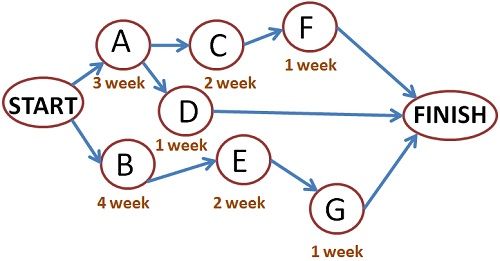Definition: The Critical Path Method or CPM is a network analysis technique concerned with planning and controlling of complex, but routine projects. Simply, Critical path method is generally used for the projects whose time duration is known with certainty and also the amount of resources required for the completion of the project is assumed to be known.
First of all, the activities comprised in a project are identified along with their importance, i.e. the dependency of activities on each other. For each activity, it is identified that which other activities are required to be completed before it starts and how long the activities takes to get finished.
Once the critical activities are identified, the network is drawn connecting all the crucial activities and depicting which activity to be carried first, so that successor activities could be performed effectively. For each activity the following parameters need to be determined:
- Earliest start time (ES): How early, the successor activity begins once the predecessor activity finishes.
- Earliest Finish Time (EF): Earliest Start Time + duration of each activity.
- Latest Finish Time (LF): The latest time within which the activity finishes without delaying the project.
- Latest Start Time (LS): Latest Finish Time – Activity duration
The critical path method follows the “activity-on-arc” diagram to illustrate a critical path of activities (as shown below). This diagram comprises of a numbered nodes that represent the stages required for the project completion while the arc shows the crucial activities as identified earlier.
The Critical Path method is deterministic in nature, since the required amount of resources and the time needed for the completion of the whole project is known, and is mainly used in the construction projects. This method was developed by Du Pont Company and the Univac Division of Remington Rand Corporation as a technique for controlling the maintenance of chemical plants.


Dan Onyema says
Thank u